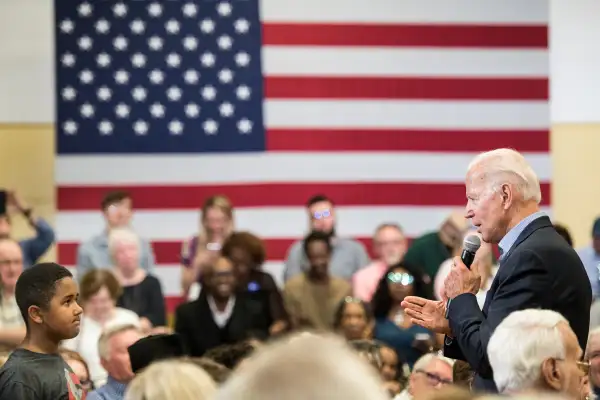Biden's 'Free College Plan' Would Pay for Itself Within 10 Years, According to a New Analysis

Democratic presidential nominee Joe Biden's plan to offer free tuition to most public college students would pay for itself within 10 years, according to a report published Tuesday.
Biden's plan would cost an estimated $49.6 billion in its first year, with two-thirds of that cost covered by the federal government and the rest by states, according to the report from Georgetown University's Center on Education and the Workforce. But within 10 years, the yearly tax revenue from a more educated workforce would exceed the annual cost of covering college tuition, the authors write.
Biden has proposed free tuition at community colleges nationwide, and that tuition and fees would be free at all four-year public colleges and universities for students from families earning less than $125,000. Tuition would also be free at all historically black colleges and universities. In doing so, he adopted a plan similar to the one introduced by Hillary Clinton during the 2016 presidential election. In the years since, college affordability and free tuition has become a mainstay on Democratic party platforms.
But while "free college" sounds pretty straightforward, there are actually many possible variations of the model. As such, the price tag differs depending on how the program is designed.
In addition to Biden's plan, the report authors estimate the costs of three different free-college models. The least expensive is what's called a last-dollar program, where the government covers any costs for tuition remaining after existing financial aid money is used up. That would total $27.8 billion in the first year of implementation, but it wouldn't offer as much additional aid for the lowest-income students, who already qualify for financial aid.
The most expensive model, according to the report, would be a universal debt-free program, in which the government covers enough of tuition and living expenses, like room and board, so that students can attend without using loans. Student living expenses represent 60% to 80% of the total cost of attending a public college, according to the report.
Biden's proposal falls in the middle of those estimates. His plan is what's known as a first-dollar model, where students at both two- and four-year colleges could keep their existing financial aid, such as federal Pell grants or state scholarships, to put toward their living expenses.
Yet because Biden's plan includes a household income limit, it saves roughly $9 billion in the first year over a more universal first-dollar plan, the report estimates. About 60% of the first-year program costs would cover expenses for lower-income students, according to the report. That makes it more equitable than a plan without an income cutoff or a last-dollar plan.
Over a 10-year period, the cost for Biden's plan would total $683.1 billion, though that estimate could change based on how many more students choose to enroll in college in light of free-tuition offers. (The authors followed modeling used by the Office of Management and Budget and Congressional Budget Office to calculate their estimates.)
A free college model would increase higher-education enrollment overall between 4% and 8% overall, with public colleges growing between 6% and 14% while enrollment at private colleges would drop by roughly the same margin.
So how does free college end up paying for itself? The authors assume that more affordable college means more students would enroll, earn college credentials, and then land higher-paying jobs. If that’s accurate, the expected earnings from increased college attainment would outweigh the costs. Specifically, the authors calculate the plan would result in an additional $371.4 billion in federal and state tax revenue over 10 years. It’d also lead to more than $860 billion more in take-home pay for Americans, according to the report.
But the big caveat is whether increased enrollment will lead to increased completion rates. Many students who start college never end up graduating, and that's produced one of the criticisms around free college proposals: that they don't address college quality.
That's why any successful free-college program will need to come with increased mentoring and student support services that will help students complete their degrees, according to the report. Career counseling will also be crucial, says Anthony Carnevale, director of the Center on Education and the Workforce and one of the report's authors.
"The missing piece in all of this, including Biden's plan, is some sort of counseling," Carnevale says. "You'd have to mandate that (students) get career counseling."
More from Money:
What Joe Biden's Tax Proposal Could Mean for Your 401(k)
Debts as Low as $25 Could Stop Millions of Students From Returning to College
Trump's Positive COVID-19 Test Is Rattling Markets. Where Are Stocks Headed Next?
